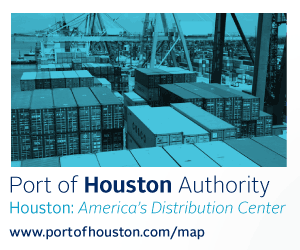
Tuesday, December 2, 2014
Top Story
Drewry: Shippers turn to airfreight to avoid port delays
 Many shippers are temporarily shifting to airfreight to deliver their eleventh hour holiday shipments in order to avoid chronic congestion and labor slowdowns at U.S. ports, according to this week's issue of Container Insight from Drewry Maritime Research.
Many shippers are temporarily shifting to airfreight to deliver their eleventh hour holiday shipments in order to avoid chronic congestion and labor slowdowns at U.S. ports, according to this week's issue of Container Insight from Drewry Maritime Research.
For a number of years, global air cargo growth has trailed behind container shipping, analysts report, due to high demand for commodities that are usually shipped by sea, faster growth of low-value commodities and the sea conversion of "mature" products.
Drewry cited a recent study commissioned by the International Air Transport Association that confirmed the above factors have combined to lower air cargo volumes by as much as 15 million tons since the turn of the century. The report said the modal shift to ocean container shipping accounts for about one-third of that downturn.
The shift towards cheaper ocean freight has gained popularity in recent years as shippers developed high tech IT systems and stringent inventory strategies. The researchers note there is also more confidence in container service reliability, which is somewhat misplaced since barely 60 percent of containerships arrived at their destinations on time during the third quarter.
Average transit times from Asia to the U.S. East Coast are 15 days longer than to the West Coast. Along with having to deal with longer lead times, Container Insight says Asia-USEC spot freight rates have increased since there is no resolution in sight for West Coast port labor contract talks.
Data from the World Container Index shows that the USEC rate premium over USWC services has grown from about $1,500 per-FEU in June to around $2,100 per-FEU by the end of November.
Drewry says airfreight rates will continue to rise in November as the shopping season hits its stride. The backlog at U.S. West Coast ports may lessen the traditional drop in Asia-to-U.S. rates in December, and depending on how long the issue remains unresolved, could keep air rates up through until Chinese New Year.
In conclusion, Drewry analysts note that congestion at U.S. West Coast ports is a costly reminder to shippers of the need for risk planning during peak seasons. They predict it will temporarily inflate air rates and demand, but won't reverse the longer-term trend towards ocean shipping.
More Newswire stories
IMO to implement mandatory container weighing in 2016
U.S. oil shipments to Asia founder as Middle East producers flood market
Alabama Port Authority to build $20M intermodal yard at Mobile port
Hundreds of refugees arrive in Greek coastal town in crippled freighter


Home | The Magazine | Conferences | Port Handbooks | Newswire | Advertise | Ocean Schedules | Contact
CBN Archives | About CBN | Subscribe to CBN | Marine Fuels Conference | Southeast Freight Conference | Heartland Shippers’ Conference | Port Productivity Conference | Pacific Northwest Ports Handbook
Golden Gates Ports Handbook | Southern California Ports Handbook | Buy Handbooks | Subscirbe to Newswire | Newswire Archives | Upload Files







